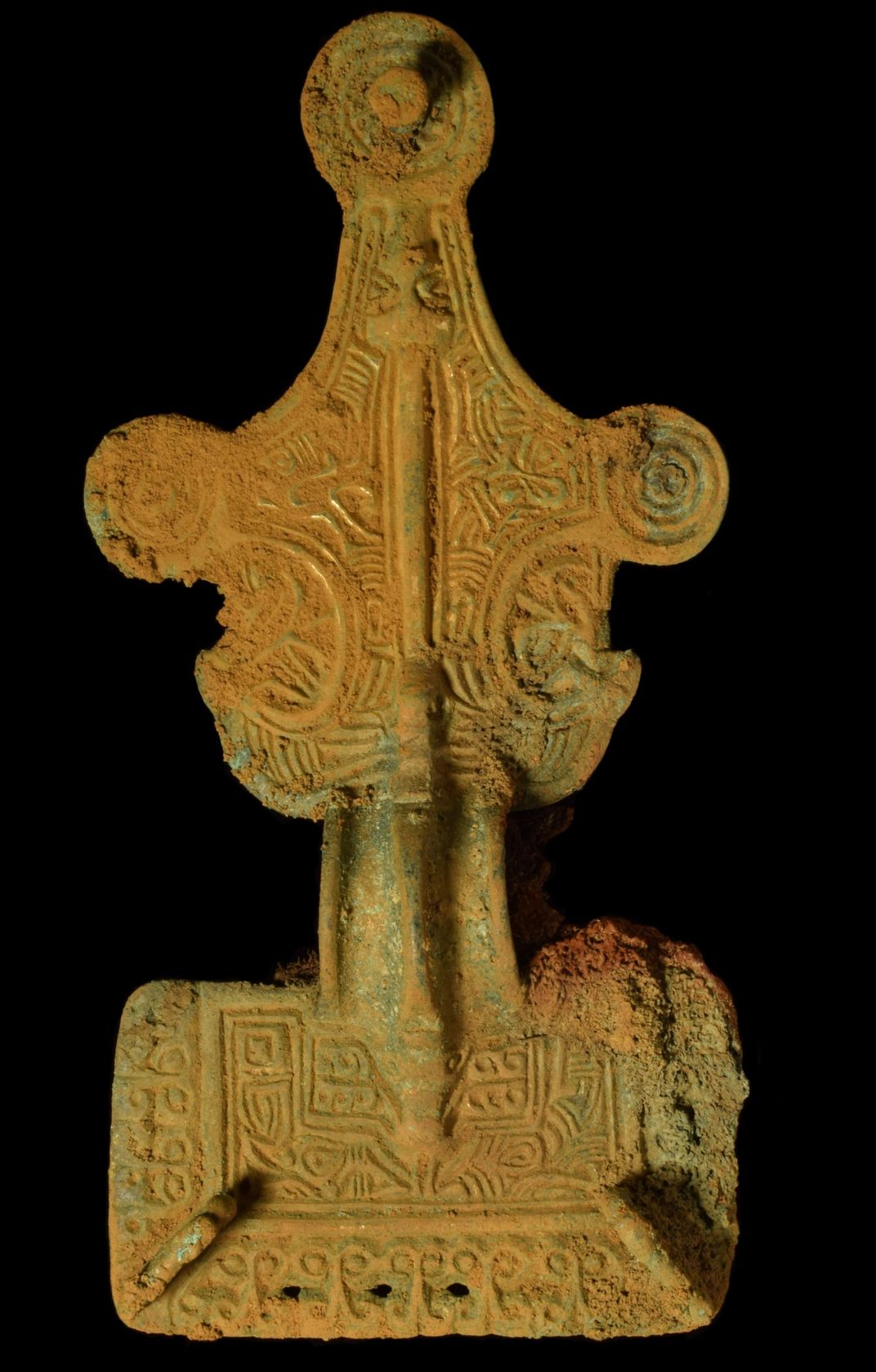Rare Scraps of Mineralized Anglo-Saxon Textiles Found in England
Archaeologists unearthed the cloth, as well as 3,000 grave goods and assorted ancient structures, ahead of construction
/https://tf-cmsv2-smithsonianmag-media.s3.amazonaws.com/filer/10/88/108897e7-2806-421c-a858-105375a65303/preserved_textile_on_a_brooch.jpg)
Last year, two companies developing land near the small village of Overstone in Northamptonshire, England, discovered a pair of subterranean surprises: a trove of 1,500 year-old Anglo-Saxon treasures and remnants of 4,000-year-old Bronze-Age burials and structures.
Barratt and David Wilson Homes had hired archaeologists from the Museum of London Archaeology (MOLA) to excavate the area ahead of construction. The researchers announced their finds earlier this month following an extensive, year-long dig.
Altogether, reports Carly Odell for the Northamptom Chronicle & Echo, the 15-hectare (37-acre) tract of land boasts a rich deposit of artifacts that spans thousands of years. The Anglo-Saxon cemetery is likely the largest of its kind ever discovered in the East Midlands county.
Per the statement, the team unearthed two Anglo-Saxon sites side-by-side: a cemetery with 154 burials and the remains of a settlement made up of 22 structures. (Another 20 Anglo-Saxon buildings were scattered across the area.) Researchers extracted more than 3,000 objects total, from jewelry, including 50 brooches, 15 rings and 2,000 beads, to weapons, such as 40 knives, 25 spears and 15 shield bosses, or conical pieces placed at the center of shields. Other finds included combs carved out of bone and cosmetic kits.
As Harry Baker reports for Live Science, the trove also included a scrap of Anglo-Saxon textiles attached to a metal brooch. After being buried in close proximity to the object for hundreds of years, the cloth fragments had mineralized but remained remarkably intact.
“It is rare to find both an Anglo-Saxon settlement and a cemetery in a single excavation,” says Simon Markus, project manager at MOLA, in the statement. “… The human remains will tell us about diet, health and even the origins of the people themselves whilst their buildings can teach us what their day-to-day lives were like and how they utilized the local landscape in these two different periods.”
Nearby, researchers also unearthed evidence of a separate—and much older—Bronze Age settlement. Archaeologists found traces of 46 burials and the remnants of seven structures, including three barrow mounds and four buildings.
According to Historic England’s Heritage Calling blog, circular, ring-shaped mounds like the one discovered in Overstone were common burial places in Bronze Age England. As the British Museum notes, the Bronze Age in Britain is generally thought to have begun around 2000 B.C., when the Bell Beaker culture migrated from mainland Europe to the British Isles.
Simon Mortimer, archaeological consultant at RPS Group, an English project management group involved in the work, notes that this recent find offers an example of how private companies and archaeologists can work together.
“These are ‘once a lifetime discoveries’ for the archaeologists on site and none of this was known about before we started on site,” says Mortimer in the MOLA statement. “This is huge advance in our understanding of two key periods in the history of Northamptonshire … and there is a unique story to tell which links populations across 3,000 years.”
/https://tf-cmsv2-smithsonianmag-media.s3.amazonaws.com/accounts/headshot/nora.png)
/https://tf-cmsv2-smithsonianmag-media.s3.amazonaws.com/filer/0e/a3/0ea35e9c-f563-4d81-8e92-3baee10e4ef9/5_-_bronze_age_monument_overlook_overstone_farm.jpeg)

/https://tf-cmsv2-smithsonianmag-media.s3.amazonaws.com/filer/3d/53/3d53a0e3-22f6-4d34-9636-986f63e5df21/screen_shot_2021-01-28_at_124908_pm.png)
/https://tf-cmsv2-smithsonianmag-media.s3.amazonaws.com/accounts/headshot/nora.png)